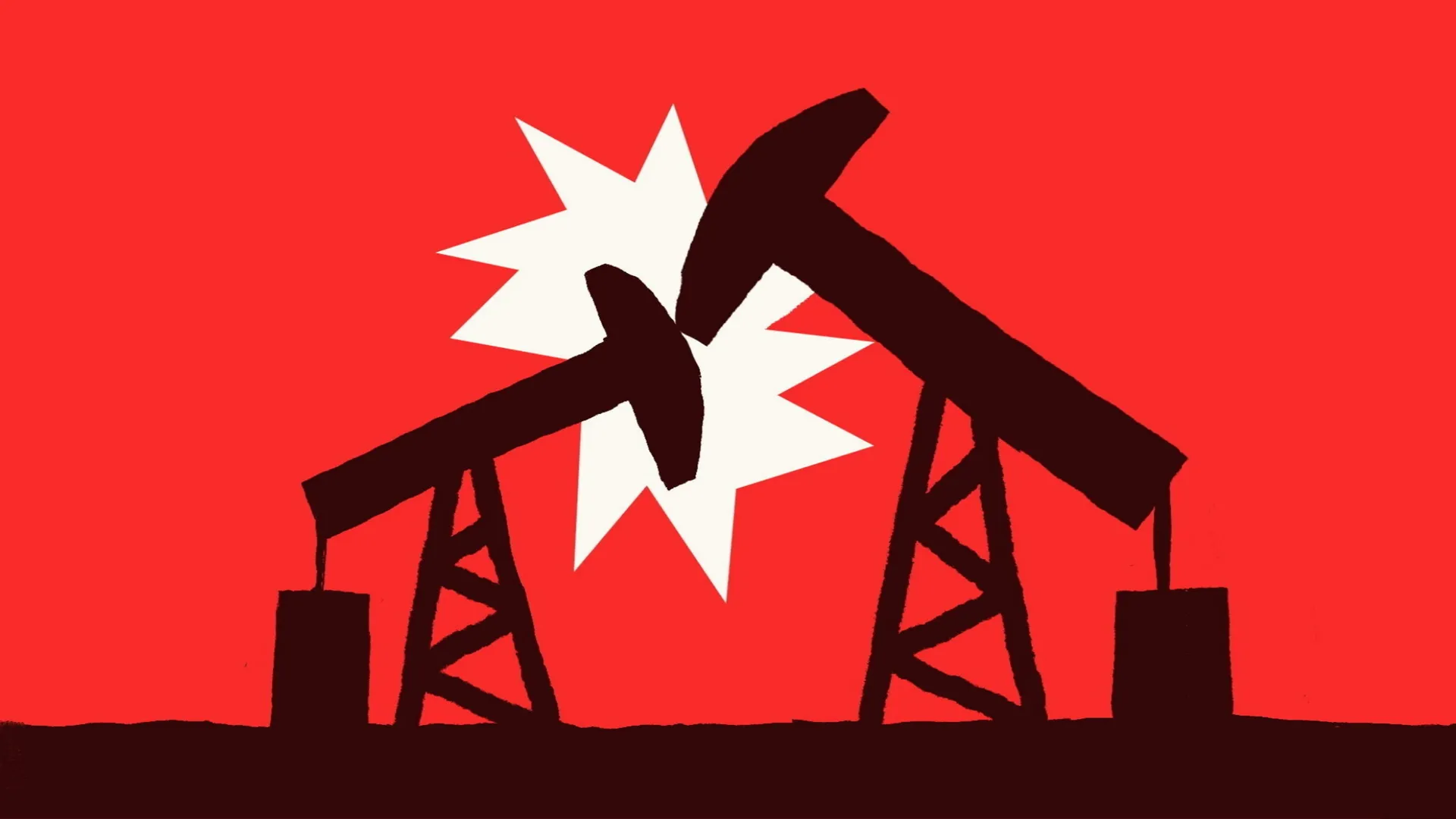尊敬的用戶您好,這是來自FT中文網的溫馨提示:如您對更多FT中文網的內容感興趣,請在蘋果應用商店或谷歌應用市場搜尋「FT中文網」,下載FT中文網的官方應用。

The writer is a senior fellow at the Carnegie Russia Eurasia Center
作者是卡內基俄羅斯歐亞中心(Carnegie Russia Eurasia Center)高級研究員
Donald Trump’s gleeful “Drill, baby, drill” pledge chimes with the idea of weaponising America’s status as the world’s largest oil producer to strip Russia of the oil revenues funding its war in Ukraine. This line of argument usually has two main points: that the US could flood the market with its crude, driving prices lower and pushing out expensive Russian barrels, and that increased US production could make it possible to embargo and sanction Russian oil exports altogether without causing a shortage and sending prices sky-high.
唐納•川普(Donald Trump)歡快地提出「鑽吧,寶貝,鑽吧」的承諾,這與將美國作爲世界最大石油生產國的地位武器化的想法相呼應,目的是剝奪俄羅斯用於資助其在烏克蘭戰爭的石油收入。這種論調通常有兩個要點:一是美國可以用其原油充斥市場,壓低價格並擠掉昂貴的俄羅斯石油;二是美國增加的產量可以使全面禁運和制裁俄羅斯石油出口成爲可能,而不會導致短缺和價格飆升。
There is already a wave of scepticism among both oil industry analysts and insiders over the viability of the 3-3-3 economic plan announced by the Treasury secretary nominee Scott Bessent. This includes increasing US oil production by 3mn barrels a day, or an energy equivalent, by 2028. The cost structure of shale oil — the main growth engine of US oil production over the past 15 years — is such that, according to the Dallas Fed, oil producers need on average a forecast of $64 a barrel price to drill a new well. Quite a few existing wells would be shut down if the price falls below $50 a barrel. The government might cut some red tape and make more federal land available for drilling, potentially offering opportunities for more prolific wells with a lower break-even price, but those changes would not have a drastic impact.
石油行業分析師和內部人士對財政部長提名人斯科特•貝森特(Scott Bessent)宣佈的3-3-3經濟計劃的可行性已經產生了懷疑。這項計劃包括到2028年將美國石油產量增加到每天300萬桶,或能源當量。頁岩油是過去15年美國石油產量的主要成長引擎,根據達拉斯聯儲的數據,其成本結構使得石油生產商平均需要64美元每桶的價格預測來鑽一口新井。如果價格跌至50美元每桶以下,許多現有油井將被關閉。政府可能會削減一些繁文縟節,並提供更多聯邦土地用於鑽探,這可能爲更多高產油井提供機會,降低盈虧平衡價格,但這些變化不會產生重大影響。
The irony is that the Biden administration, for all its green measures and talk, has not been too hard on the oil industry, so there is little additional pressure that the Trump administration could remove. Theoretically, it might stimulate additional production by reducing the royalty charged on barrels produced on federal land, but that royalty rate is already much lower than in most of the world. Another possibility would be to offer production-stimulating corporate income tax cuts, but that would contradict other elements of Bessent’s plan. Even if the plan to increase oil production works, its target date of 2028 will certainly not help Trump enact his promise to stop the war in Ukraine during his first weeks in the Oval Office.
具有諷刺意味的是,儘管有各種綠色措施和言論,但拜登政府對石油行業並沒有太嚴厲,因此川普政府幾乎沒有需要消除的額外壓力。理論上,它可能會透過降低在聯邦土地上生產的石油的特許權使用費來刺激額外的產量,但該特許權使用費率已經遠低於世界上大多數地區。另一種可能是提供刺激生產的企業所得稅減免,但這與貝森特計劃的其他要素相矛盾。即使增加石油產量的計劃奏效,其2028年的目標日期肯定不會幫助川普兌現他在橢圓形辦公室的頭幾周停止烏克蘭戰爭的承諾。
Oil production growth in most places — Russia included — is usually the result of activities performed and planned long before the fact, during the fat years. Today, Russia does not have many sources for continuing oil production growth: most new projects have been mothballed since the full-scale invasion of Ukraine in 2022. Russia might even struggle to maintain a plateau once it eats through the inventory of the approximately 1mn-barrel-a-day spare capacity that was taken offline under Opec+ agreements.
包括俄羅斯在內的大多數地方的石油產量成長通常是在豐年之前很久就進行和計劃的活動的結果。如今,俄羅斯沒有太多保持石油產量成長的來源:自2022年全面入侵烏克蘭以來,大多數新項目都被擱置了。一旦俄羅斯耗盡了歐佩克+協議下每天約100萬桶的閒置產能,它甚至可能難以維持穩定的產量。
But it would not cost much for Russia to maintain a manageable decline of 2-3 per cent a year. By some estimates, the average cost of producing, processing and transporting the oil to export terminals from the existing wells in today’s Russia is $11-$12 a barrel, and $17 a barrel with drilling and development costs within existing fields. That has been creeping up with inflation, but it is mostly rouble-based, so a weakening rouble drives dollar costs lower. Even assuming that the US plan works and the US and Saudi Arabia agree to bring prices below $50 a barrel, it is unlikely that this would make Russia curtail its oil production.
但俄羅斯要保持每年2-3%的可控下降,並不需要付出太多代價。據估計,在今天的俄羅斯,從現有油井生產、加工和運輸石油到出口碼頭的平均成本爲每桶11-12美元,在現有油田內的鑽井和開發成本爲每桶17美元。這一數字一直在隨著通膨攀升,但主要是以盧布爲基礎的,因此盧布走軟會降低美元成本。即使假設美國的計劃奏效,美國和沙烏地阿拉伯同意將油價降至每桶50美元以下,這也不太可能使俄羅斯削減石油產量。
It’s true that the country’s trade balance would suffer in such a situation: a $10-a-barrel change in the export price translates to $25bn a year, but that is less than 7 per cent of total Russian exports and even less than the annual current account surplus now. There will be extra losses from gas trade, as gas prices in Chinese contracts are linked to the oil price, but the volumes are far smaller.
確實,在這種情況下,該國的貿易平衡將受到影響:出口價格每桶變化10美元,意味著每年損失250億美元,但這還不到俄羅斯總出口的7%,甚至比現在的年度經常賬戶盈餘還要少。由於中國合同中的天然氣價格與石油價格掛鉤,天然氣貿易也會有額外損失,但其數量要小得多。
Nor will the hoped-for 3mn barrels per day of additional US production be enough to replace the 7mn currently exported by Russia. As a result, it would still be very disruptive to try to embargo Russian oil from the world markets altogether. That strategy mostly worked with Iran in 2018, but there were only 3mn barrels of export volumes to replace. Russia plays a much bigger role in the global oil markets and there is no quick fix that can change that, even if everything goes according to Trump’s very ambitious plans and campaign trail promises.
即使美國希望的每天300萬桶的增產,也不足以替代俄羅斯目前出口的700萬桶。因此,試圖全面禁止俄羅斯石油進入世界市場仍將造成很大的破壞。2018年,該策略對伊朗基本奏效,但當時只需替代300萬桶的出口量。俄羅斯在全球石油市場中扮演著更重要的角色,即使一切都按照川普非常雄心勃勃的計劃和競選承諾進行,也沒有快速解決方案可以改變這一點。
Since the beginning of the war, the west has managed to put a dent in Russia’s oil revenues, but it is now struggling to reduce them further. So far, Trump and his associates have not produced a plausible breakthrough strategy for the short to medium term. It is accordingly wise to design plans and strategies regarding Russia around the assumption that its oil revenues remain quite resilient and cannot be drastically reduced.
自戰爭開始以來,西方已經成功減少了俄羅斯的石油收入,但現在很難進一步減少。到目前爲止,川普及其夥伴尚未提出一個在短期到中期內可行的突破性策略。因此,圍繞俄羅斯設計計劃和策略時,明智的做法是假設其石油收入仍然相當有韌性,無法被大幅削減。